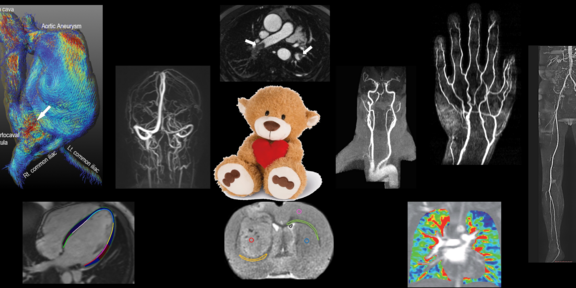The colorful world of magnetic resonance imaging without gadolinium-based contrast agents
- Kolloquium

The colorful world of magnetic resonance imaging without gadolinium-based contrast agents
Gadolinium (Gd) belongs to the group of lanthanides and is similarly toxic as lead or mercury.
Gadolinium is paramagnetic. This makes it ideal as an exogenous contrast agent for use in
magnetic resonance imaging (MRI), e.g. to make the inflammatory foci in multiple sclerosis as
well as tumors and their metastases more visible and thus improve the diagnostic image
contrast. However, the gadolinium is used in bound form in so-called chelates so that it is not
deposited in the body. The gadolinium (III) complex Gd-DTPA (gadopentetate) was approved
in 1988 under the name Magnevist® (Schering AG, Berlin, Germany) as the first exogenous
contrast agent for human MRI.
In 2014, KANDA and colleagues first reported the relationship between cumulative
concentration of administered gadolinium-based contrast agents in tumor patients and the
increase in signal intensity on their contrast agent free MRI images in the globus pallidus and
dentate nucleus.
Since then, it has been shown that gadolinium-based contrast agents can be deposited not
only in the brain but also in extracranial tissues such as liver, skin, and bone.
This evidence has raised new concerns about the safety of gadolinium-based contrast agents.
Subsequently, at the end of 2017, the German Federal Institute for Drugs and Medical Devices
(BfArm) recommended the reduced use of gadolinium-based contrast agents until further
notice.
Based on a personal story, I will introduce the audience to the versatile opportunities for clinical
use of non-contrast MRI techniques that can be used for whole-body tissue characterization
and vascular imaging. Here I will explain the role of a physicist in the successful transfer of
these techniques from research to the clinic.










